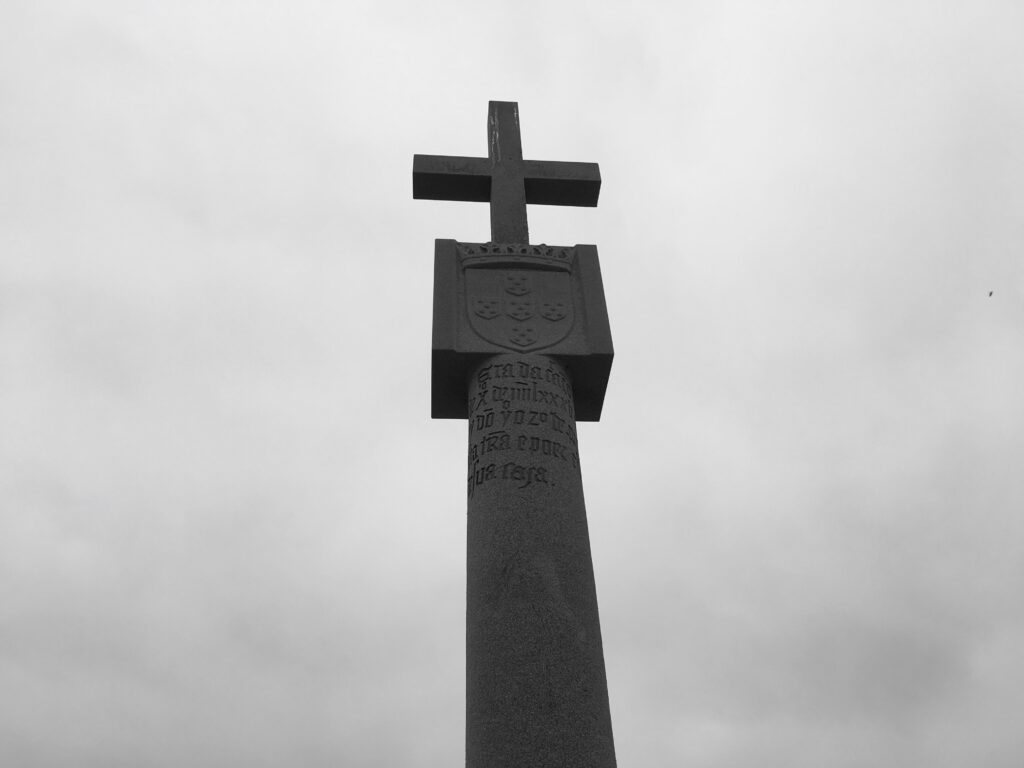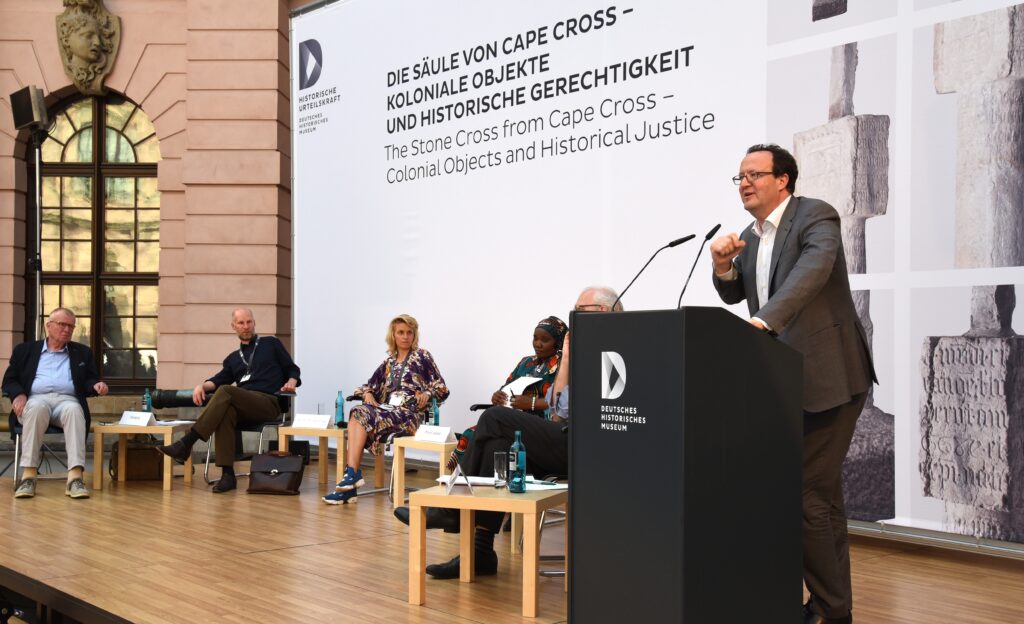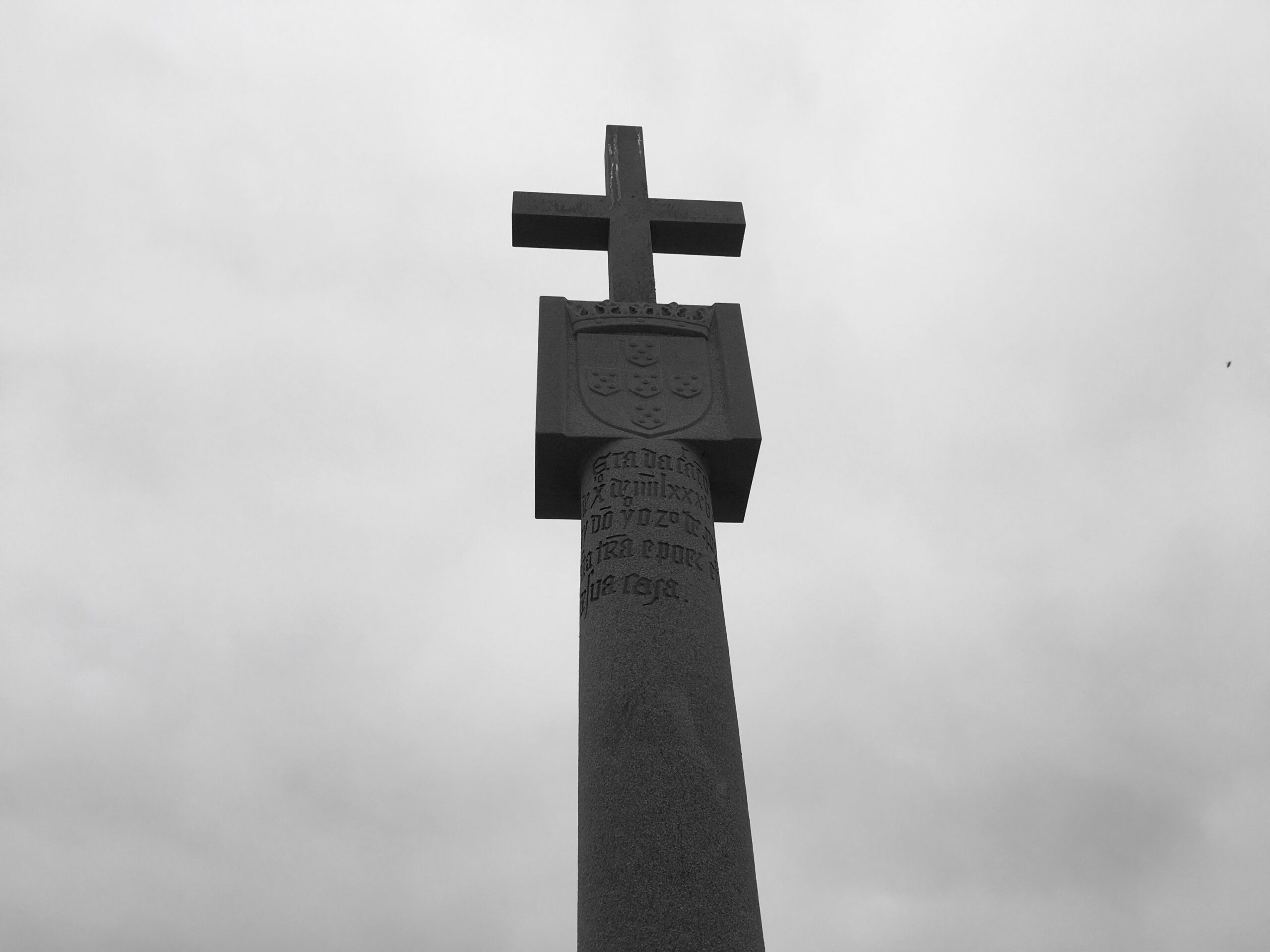By: William Blakemore Lyon (Humboldt University of Berlin)
Originally Published 12 October 2018 [LINK TO ORIGINAL]
The Cape Cross Symposium 07.06.2018
What do you think of when someone mentions Cape Cross? Perhaps it brings to mind thousands of unfortunate smelling Cape Fur Seals, or maybe the raw beauty of the Namibian coast. You may also think of the stone crosses that along with the seals make this location famous. However, one cross that formerly stood on the windswept coast from the late 15th century was relocated to Germany in 1893 and is currently held by the German Historical Museum in Berlin. The questions why, how, and where it should stand today lay at the heart of the recent Cape Cross Symposium on the 7th of June 2018.

The Cape Cross was constructed under King João II of Portugal and was aboard the ships of explorer Diogo Cão, who on his second voyage from Portugal reached the south-western coast of Africa and placed it at Cape Cross in 1486. This region up until that time had been populated by various groups of Namibians. According to Namibian historian and archivist Dag Henrichsen, it was probably not a place of permanent settlement but was a location visited by different Khoekhoegowab-speaking people including Topnaar and Dâure Daman before emigrations of the Herero (probably from the 15th century). The Portuguese landing at Cape Cross was in context only a blip in the region’s long history and for a few hundred years the cross remained in place. Namibians in the area continued to have agency over their own lives and future, uncolonized by European powers.

During the 1880s scramble to colonize Africa, Germany, a new empire on the scene, came to occupy and rule the new colony they called Deutsch-Südwestafrika which included the Cape Cross coast. Soon after occupation, the Germans unilaterally and without any communication with the local inhabitants removed the Cape Cross and brought it to Germany. In modern times, Namibia has argued that for legal and moral reasons the cross should be returned, and Germany has voiced openness to further debate regarding the cross’s future.
The June 2018 Symposium brought together politicians, diplomats, historians and museum curators to discuss not only this stone relic, but its implications for repatriation of other items in Germany taken during the colonial era and relations between the former colonized and colonizer. Recently French president Emmanuel Macron announced that the return of items in French museums to African nations will be a priority throughout the next five years. He stated, “I am from a generation that doesn’t come to tell Africans what to do.” Will Germany implement a similar policy regarding possessions which were taken from their former African colonies? In June, Monika Grütters, Germany’s Federal Government Commissioner for Culture and the Media, spoke of her country as “world class” in restitution and coping with the past. However, she did not give formal government plans regarding how Germany would proceed on matters of restitution with items such as the Cape Cross. Owing to the fact that the German Historical Museum is a fully publicly funded institution, the government position directly affects the museum’s collection. There is also a very real possibility that the rise of the growing political far-right in Europe will move to silence the conversation completely.

Furthermore, the question of what to do with the cross cannot be separated from the ongoing Namibian-German negotiations on a formal apology, legal acceptance of wrong-doing and potential reparations for the 1904-1908 genocide of the Nama and Herero. An act such as a return of the Cape Cross could exemplify diplomatic good will between the two states, and potentially lead to further cooperation on other fronts.
By organizing the symposium, the German Historical Museum showed admirable progress by inviting and giving the stage to a large delegation of Namibians in addition to Germans. While this is clearly necessary for open debate, it is sometimes not the case at similar events. The wealth disparity between Germany and Namibia often results in an inability for Namibians who wish to participate in such events to attend. However, it is common that Germans will receive funding to participate in Namibian-hosted events. But at the Cape Cross Symposium, the parity of representation and simultaneous translation between English and German gave the event participants equal opportunity and voice. The enlightened result was that by the day’s end, there was general agreement amongst many participants in the room that the cross should be returned to Namibia.
What remains unknown is what will actually occur moving forward. Though the museum seems to have checked all the right boxes, they have yet to say what next steps will be taken. This was the symposium’s most tangible inadequacy. Nevertheless, it must be said that the museum is in a difficult situation in that they are, like most European museums, an object-centric institution. Whereas museums with less to display, such as many in Africa, are pushed to become more narrative centric and locations for dialogue, large European museums can and largely remain centered around displaying prized items. This stems from the fact that museums in Europe hitherto possessed virtual monopolies of knowledge within society. These institutions represented a European worldview, which posited that objects from around the world should be collected and put on display. Today our access to knowledge has largely been democratized and visitors can view and learn about items anywhere in the world via the phones in their pocket. It will therefore behoove European museums to adopt the newer methodologies that African museums have already begun to implement. Moreover, many items in European museums arrived in their collections after having been stolen or hauled off under the pretext of a mutual agreement; with our modern viewpoint, we can clearly see the role that unequal power relations played in these actions.
As Berlin prepares for the opening of the Humboldt Forum in 2019, which will paradoxically include an ethnological collection originating in the colonial era, the city is looking to re-define its relationship with its colonial past. The fate of the Cape Cross and similar objects is at the core of this process. Many believe that the best course of action is immediate repatriation of the cross to Namibia. According to Jeremey Silvester of the Museums Association of Namibia, the process and implementation of the decision to repatriate could be the basis of a new exhibit at the German Historical Museum that would bring at least similar if not more crowds and public acclaim than the cross does today. Such a conclusion could be a breakthrough showing societal progress and also a willingness to build deeper friendship and stronger ties between Germany and Namibia. The ball is in Germany’s hands, and for their sake and that of European-African relations, let us all hope that they begin the process of returning the Cape Cross to Namibia.
